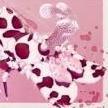-
Topics
-
Latest Update
-
6
Arctica 1HP Chiller. Selling Cheap.
Want to clear before I go overseas. priced to go now is $488 -
2
-
1
For sale: clowns, tangs, wrasse stripey
Left: Stripey (1.5inch)- $120 Bicolor cleaner wrasse- $15 Melanurus wrasse- $20 Black storm clown pair- $150 Yellow scopas tang- $150 Yellow eye white tail tang- $350 Zebra tang- $2500 Collection at kembangan. Pm or telegram me @caulifloweric to deal -
0
-
0
WTS Equipments
Hi all would like to sell some equipment as planning to upgrade tank. I believe that the equipment selling would be preferred for nano tank (20G or less) others can help to advise too if I'm wrong. 1. Aquanest Aquamini 5 Spectrum Led at $80 (Brand New and Unused, bought previously at $89) 2. Sicce Syncra Silent 0.5 Pump 700 LPH at $38 (Used for about 1 month but upgraded, bought previously at $48) Take both at $100. Self collection at 689575. Thanks for looking and have a great week. Sent from my SM-S906E using Tapatalk
-








Recommended Posts
Join the conversation
You can post now and register later. If you have an account, sign in now to post with your account.